We plan to realize a sensor cable several 1000m long which has ideally every 1-2m a magnetic field sensor on a small 10x30mm platine with microprocessor/FPGA for DSP and I2C on chip communication. Later this will be integrated into an ASIC.
The sensors slaves are thought to do alarm handling/asynchronous messaging to the master/repeater, if a distinct magnetic field value change is too high. Several limitations exist I'm aware of to yield a nearly real-time and cheap and low power consuming cable. It is important that all sensors in the cable check with at least 10Hz the field, the power consumption of the sensors will be in the 50 microA range. All sensors should be powered by the fieldbus cable.
I studied different fieldbus systems
Best for our purpose seem to be CANopen, MODBUS or Profibus (but no sensor voltage supply for this). For a sensor every 1-2 meter with maximum node of 250 we would need every 250-500m a fieldbus repeater (which is not very cheap).
Is there a technical/fieldbus alternative for our purpose if high data rate and is not the most important criterion but keeping the cable cheap?
Would it make sense to create our own fieldbus protocol which maybe can handle 1000 nodes on 1000-2000m without a hardware repeater or even develop a own repeater for our start-up company on our own? We have a engineering team which will do this if it is possible and feasible (price and expense) and funding.
